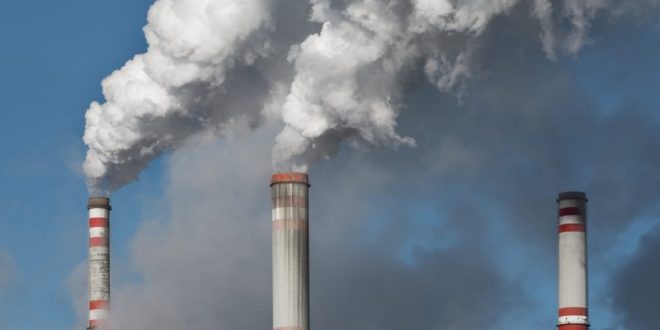National carbon prices and similar mechanisms are urgently needed as a part of countries’ concrete national net-zero policies, International Energy Agency (IEA) Executive Director Fatih Birol told the World Bank Group’s virtual climate action event Innovate4Climate on 26 May.
The IEA recently released a report describing how a rapid rise in global emissions in 2021 means that various actors should take more serious measures, such as ending fossil fuel production this year.
Birol warned governments’ net-zero declarations are not enough, and the gap between their targets and reality is getting wider. He explained that what is needed is a suite of policies that would speed the transition.
Specifically, governments should declare targets that can be monitored and tracked by the public; create policies to transition national energy sources to, for example, offshore wind; enact carbon pricing; and ensure a “just transition” and energy security for the poorest in society.
“So, if we leave everything as it is, and if governments do not take any measures such as carbon pricing, clean and renewable energy will increase, but the pace of increase will be so slow that we have no chance whatsoever. We need innovation, new technologies, investing in new technologies like hydrogen, battery storage and others in order to give the unmistakable signal to investors to invest in these technologies,” said Birol.
Carbon pricing is needed in the short term, “first to punish the bad, and second, to incentivize the good,” he said. However, carbon pricing alone will not be sufficient, and must be paired with “a suite of policies,” emphasized Birol.
The World Bank works with countries as they design their low-carbon development policies, said World Bank Managing Director of Development Policy and Partnerships Mari Pangestu. It is also helping to phase out fossil fuel subsidies that drive both emissions and social inequality.
Pangetsu agreed with Birol that national plans are the key. They should be backed by targets for transport, energy, and agriculture sectors, with governments bolstering public support by touting their positive impacts on job creation and quality of life.
Shadow carbon pricing belongs to a “toolbox” of policies serving similar functions like emissions trading, tradable performance standards, and fuel taxes and subsidies. Countries should pick some to suit their circumstances, she advised.
The World Bank is taking a tailored approach to development, Pangestu said. “So, we are working and supporting countries to design the best policy for them. It tends to be very country-specific. We have to listen to the countries’ needs and priorities. You know, if their priority isn’t revenue, then it probably has more to do with taxes and subsidy reforms, as well as emissions trading systems. If it is simple governance, then actually carbon taxes are better, but politically very difficult compared to emission trading systems.”
She added that fuel subsidy reforms are the most difficult politically. “Policies like fuel subsidy removal lead to high price inflation. How do you repurpose that subsidy to help the poorer households create? We have used it also to build infrastructure, improving growth,” said Pangestu.
Global aims for carbon markets
While at the 12th Petersburg Climate Dialogue on 6 May, German Chancellor Angela Merkel called a global carbon market “desirable,” but despite talk of a global carbon market, there is no international consensus on a carbon price strategy yet.
One group attempting to help form a global consensus is the Task Force on Net Zero Goals and Carbon Pricing, which was launched by the World Bank’s voluntary initiative, Carbon Pricing Leadership Coalition (CPLC), at the Paris Climate Conference (COP21) in 2015.
Speaking at Innovate4Climate, the two co-chairs of the Task Force launched a draft report that they hope will contribute to global adoption of carbon pricing.
The report said countries should use shadow carbon prices to ensure carbon market prices remain sufficiently high. “Carbon pricing, fortunately, already exists in about 81 countries, but the level of government carbon prices is not high enough. We need to do better. We need to increase the level of ambition so that carbon prices deliver all their potential. One way of making this happen is making governments adopt internal carbon prices, or shadow prices, so they can guide their investment decisions. So that any major corporation deciding about a project can incorporate this in its decision,” said co-chair Mauricio Cárdenas, who is also a visiting Senior Research Scholar at the Center on Global Energy Policy at Columbia University.
Funds collected with carbon prices should be used to protect the poor during the energy transition, according to the report. “The revenues collected with carbon prices help governments to reduce energy poverty, and reach out to the poor. We also find these need to be accompanied by active policies to ensure a just transition for workers and communities, and to ensure that socially vulnerable groups are not further marginalized in the process of reaching net zero. This is an important recommendation from the Task Force’s work,” said Cárdenas.
National and corporate internal carbon prices should also be made public, alongside net zero trajectories and progress, so that comparisons can be made. The availability of this data for public scrutiny plays into what the report calls “a social license for carbon pricing.”

 Iran Energy News Oil, Gas, Petrochemical and Energy Field Specialized Channel
Iran Energy News Oil, Gas, Petrochemical and Energy Field Specialized Channel



